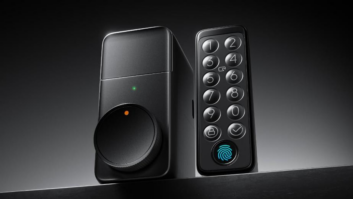In April of 1998 I lost my voice after giving a training session. I visited an ear, nose and throat (ENT) specialist in my hometown and he told me that I was hoarse from talking too much. I figured he must be right for the following reasons: one, he was a professional; and two, my wife said the same thing.
One month later my voice hadn’t improved so I went to another ENT specialist for a second opinion. This time I was told I had an infection and was put on antibiotics. Not only didn’t my voice get better, but it was deteriorating quickly.
I then went to Vanderbilt Hospital to meet the chairman of their ENT department, Dr. Ossoff. He was the first physician to actually ask me a series of related questions — 25 in all —and was the first to look down my throat with a scope. He told me that it was not good news. I had a large polyp on my right vocal cord that required surgery. The prognosis: A one in three chance of getting my voice back and a one in three chance of having no voice at all.
It took over two months to prepare my throat for the operation. In September of 1998 I had the procedure, and I am glad to report that the polyp was benign and that Dr. Ossoff gave me my voice back.
You may be wondering what this has to do with retail sales? The fact is, it has everything to do with it. The biggest obstacle most sales organizations face today is the inability of the salesperson to properly diagnose the customer. Most have the bad habit of treating every customer just like the last one. (This is exactly what happened to me with the first two ENT doctors.) Why? Because it is human nature to do this, that’s why.
Now I’m not saying that salespeople are discourteous or unhelpful. On the contrary, most are courteous and try to be of assistance. The problem arises because they are selling the same product every day — one that they are very familiar with — to hundreds of customers. It is therefore only natural that they would unconsciously assume that if a customer needs, let’s say, a DVD player, then that customer is very similar to the last DVD customer.
If you do not believe this happens in your organization, then try this little exercise:
After a customer leaves, with or without merchandise, pose the following questions to the salesperson and ask for very specific responses:
- How did the customer plan on using the product, i.e. when, where and how often?
- Has the customer ever owned one before? If they had, what did they like and dislike about their current model? If not, why were they interested in getting one?
- Who else will be using it?
- What accessories did they need and why?
- What was the customer’s name?
- At this point you will find that most of the answers you get are pretty weak.
Think about it: The better your salesperson knows the customer, the more likely it is that he will succeed at the following:
- Make the right diagnosis,l Sell a better-featured product,l Sell more accessories,lReduce returns,lImprove customer loyalty.
- We are not performing a life altering operation like Dr. Ossoff did. We do, however, have the ability to alter someone’s impression of our company and make their life just a little bit better if we take the time to get to know him or her as a person and not just as another customer.













